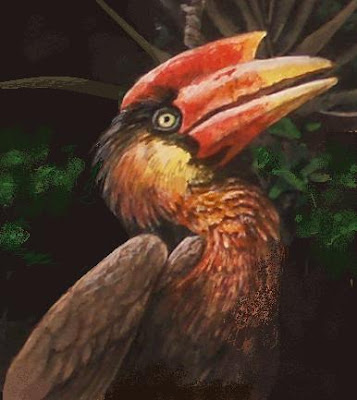AN E.S.A. LOOPHOLE DENIED

When it comes to icons of American forest conservation, most of us think of birds like Spotted Owls, Marbled Murrelets, or Red-cockaded Woodpeckers—tree-dependent species that are easily impacted by intensive logging and the removal of trees. Clear cutting creates other, less obvious changes such as soil compaction, overall desiccation, and changes in soil chemistry and microfauna, which can be equally lethal for smaller, more cryptic species. Among the most vulnerable of these are the salamanders. In the southern Appalachian Mountains, the center of salamander diversity in the United States, it's estimated that logging has reduced the overall salamander population by 9%. The salamanders most vulnerable to logging impacts are probably the members of the family Plethodontidae, the largest salamander family, with 23 genera and well over 200 species, nearly half of which are native to the U.S.A. Having no lungs, these mostly small, slender amphibians breath through their delicate skin, which loses moisture quickly. Because of this, they venture abroad only at night and during rain, otherwise remaining ensconced under leaf litter or inside decaying wood. Despite their vulnerability, a mere seven plethodontid species appear on the USFWS Endangered Species List--three listed as threatened, four as endangered. In the western U.S., salamander diversity is centered in the Pacific Northwest, where the most common plethodontid is the Western Red-backed Salamander (Plethodon vehiculum), pictured above, which ranges from Vancouver Island south along the western slope of the Cascades, to southwestern Oregon. Just south of P. vehiculum's range, a small complex of plethodontid species straddles the Oregon/California state line. Considered a single species, P. elongatus, until recently, mitochondrial DNA analysis has provoked researchers to split it into three. In 2002 the Siskiyou Mt. Salamander, of the Applegate and Klamath River drainages, previously considered a subspecies, was given full specific status as P. stormi. California acted quickly to add P. stormi to its Endangered Species Act as a threatened species. Approximately 90% of the its known range occurs on Federal land, and the salamander's listing blocked several plans for timber harvest.
 In May, 2005, the same researchers identified a population of salamanders near the confluence of the Klamath and Scott Rivers to be a unique species, the Scott Bar Salamander (P. asupak), pictured above. This time, the state's reaction was very different. The California Department of Fish & Game informed forestry officials and timber companies that since the new species is not on the state's ESA list, that logging could commence within its 28,000 hectare range. Three conservation groups sued the Department, and in a ruling this week, superior court judge Peter Busch stated that the Department of Fish & Game does not have the authority to strip the salamander's protection. The D.F.G. is also attempting to delist the Siskiyou Mt. Salamander. If this effort succeeds, it will be the first time in California history that a listed species lost state protection. It's a little surreal to watch such behavior from a state department entrusted with wildlife management. We can hope that last November's failure of California Congressman, chairman of the House Resources Committee, and sworn enemy of the Endangered Species Act Richard Pombo to win reelection marks the return of a wildly errant pendulum.
In May, 2005, the same researchers identified a population of salamanders near the confluence of the Klamath and Scott Rivers to be a unique species, the Scott Bar Salamander (P. asupak), pictured above. This time, the state's reaction was very different. The California Department of Fish & Game informed forestry officials and timber companies that since the new species is not on the state's ESA list, that logging could commence within its 28,000 hectare range. Three conservation groups sued the Department, and in a ruling this week, superior court judge Peter Busch stated that the Department of Fish & Game does not have the authority to strip the salamander's protection. The D.F.G. is also attempting to delist the Siskiyou Mt. Salamander. If this effort succeeds, it will be the first time in California history that a listed species lost state protection. It's a little surreal to watch such behavior from a state department entrusted with wildlife management. We can hope that last November's failure of California Congressman, chairman of the House Resources Committee, and sworn enemy of the Endangered Species Act Richard Pombo to win reelection marks the return of a wildly errant pendulum._____________________
upper: WESTERN RED-BACKED SALAMANDER (2003) acrylic 4" x 10"
lower: Photograph of Plethodon asupak (adult & juvenile) ©Tim Burkhardt






2 Comments:
I love Plethodons. In the mid 90s I spent almost a month with Dick Highton of the University of Maryland collecting pleths all across the southeastern U.S., including several populations that he later described as new species. Very cool animals, totally underappreciated!
Nice blog (yawn).
Post a Comment
<< Home